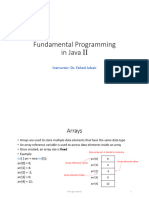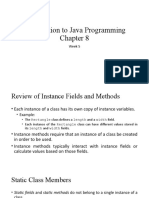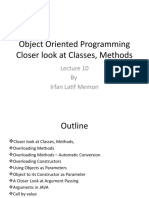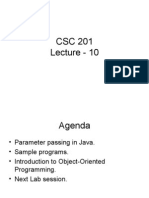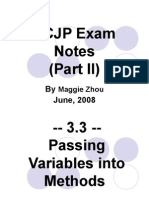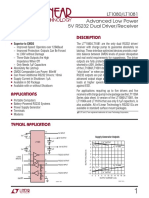0% found this document useful (0 votes)
65 views23 pagesLec 4 - Passing Object in Java
1. In Java, primitive parameters are passed by value, meaning a copy of the primitive value is passed into the method. Modifying the primitive parameter inside the method does not change its value outside the method.
2. Object parameters are passed by reference, where a reference to the object is passed. While the reference itself is passed by value, modifications to the object inside the method are reflected outside the method since the reference refers to the same object.
3. The equals() method compares object contents by default rather than memory addresses like the == operator. Developers should override equals() to define object equality based on attribute values rather than memory location.
Uploaded by
Jawad NasirCopyright
© © All Rights Reserved
We take content rights seriously. If you suspect this is your content, claim it here.
Available Formats
Download as PPTX, PDF, TXT or read online on Scribd
0% found this document useful (0 votes)
65 views23 pagesLec 4 - Passing Object in Java
1. In Java, primitive parameters are passed by value, meaning a copy of the primitive value is passed into the method. Modifying the primitive parameter inside the method does not change its value outside the method.
2. Object parameters are passed by reference, where a reference to the object is passed. While the reference itself is passed by value, modifications to the object inside the method are reflected outside the method since the reference refers to the same object.
3. The equals() method compares object contents by default rather than memory addresses like the == operator. Developers should override equals() to define object equality based on attribute values rather than memory location.
Uploaded by
Jawad NasirCopyright
© © All Rights Reserved
We take content rights seriously. If you suspect this is your content, claim it here.
Available Formats
Download as PPTX, PDF, TXT or read online on Scribd
/ 23









